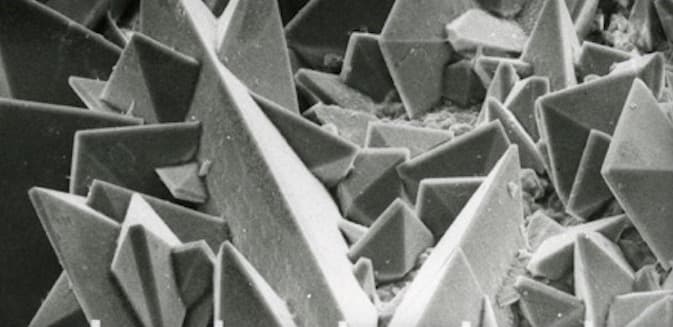Intestinal flora may prevent kidney stones

The role of the gut microbiome in human health keeps expanding, but some microbes are slow to reveal their secrets.
In a study published online Oct. 13, 2016, in the Journal of the American Society of Nephrology, a research team based at the University of Chicago describes progress in unravelling how factors produced by the intestinal bacteria Oxalobacter formigenes can prevent the development of kidney stones by reducing the amount of stone-forming oxalate in the urine and escorting it through the colon for excretion. This research could lead to novel ways to prevent hyperoxaluria and related kidney stone disease.
In their report, Oxalobacter formigenes-Derived Bioactive Factors Stimulate Oxalate Transport by Intestinal Epithelial Cells, the researchers show that secretions from these beneficial bacteria can increase the removal of oxalate from the kidney by transferring it into the intestine. This process was found, in a mouse model, to reduce oxalate levels in urine by 32 percent and increase oxalate secretion via the colon by 42 percent.
“Our study is important because it brings us several steps closer to identifying the factors produced by Oxalobacter formigenes that keep high levels of oxalate from entering the urinary system and transport it instead through the colon,” said study leader nephrologist Hatim Hassan, MD, PhD, assistant professor of medicine at the University of Chicago. “Understanding this process could help us prevent the formation of calcium oxalate crystals, the most common form of kidney stones.”
More than eight percent of people living in the United States develop kidney stones, which can be extremely painful. Kidney stone disease is the second most common kidney disease in the U.S after hypertension. Nearly half of those who get a kidney stone develop another one within five years. This cycle can lead to chronic kidney disease and, over time, kidney failure. The annual economic impact of kidney stones is estimated to exceed five billion dollars.
Elevated urine oxalate, known as hyperoxaluria, is even more common in people with diabetes or obesity. Severe hyperoxaluria occurs in patients with inflammatory bowel disease and is not uncommon after small bowel or weight-loss surgery. “With the rising prevalence of obesity and bariatric surgery, we expect the incidence of hyperoxaluria and kidney stones will continue to increase at a significant rate,” Hassan said.
Oxalate is found in a wide variety of foods, especially leafy greens such as spinach, beet greens and Swiss chard, as well nuts, such as almonds, cashews and peanuts. Some people take up more oxalate than others. When high levels of oxalate are absorbed into the blood during digestion, the kidneys filter it out and urinary oxalate increases. When oxalate combines with urinary calcium, the risk of forming calcium-oxalate crystals multiplies. This is the most common type of kidney stone.
Fortunately, certain intestinal bacteria, particularly Oxalobacter formigenes, can help regulate the amount of oxalate available for absorption. These bacteria live in the large intestine, where they rely on oxalate as their sole source of energy. So instead of the colon taking up oxalate, which is later filtered out of the blood by the kidneys, O. formigenes devours it, thereby minimizing the amount available for intestinal absorption and subsequent urinary excretion.
Unfortunately, not everyone’s colon contains O. formigenes. Studies suggest that fewer than 75 percent of people are colonized with this microbe, which is highly susceptible to antibiotics. No reliable methods of introducing O. formigenes as probiotics to colonize the colon of people who lack them have been devised.
Hassan and colleagues used human intestinal cells grown in tissue culture to better understand the mechanisms these bacteria use to regulate oxalate levels. When they grew the bacteria in culture media with low levels of oxalate, then removed the bacteria, they found that the bacteria secreted “soluble bioactive factors that stimulate oxalate transport by the human intestinal cells through mechanisms including increasing the activity of a protein transporter called SLC26A6, which plays a critical role in preventing hyperoxaluria,” Hassan said. Rectal administration of the culture media alone reduced urinary oxalate levels in hyperoxaluric mice.
His team was able to identify several promising proteins secreted by Oxalobacter in the culture media and their characterization is underway.
“These factors retain their biological activity in vivo and reduce urinary oxalate excretion in mice,” Hassan said. “This provides compelling evidence for the aggressive pursuit of their characterization.”
If that proves too slow or difficult, he added, “it is worthwhile to evaluate the therapeutic potential of Oxalobacter formigenes culture media in human subjects with hyperoxaluria.”
“Probiotic bacteria have several health benefits,” Hassan said. “However, the difficulties in determining biosafety and intestinal bacterial bioavailability are potential problems. Developing probiotics-derived bioactive factors is an alternative approach that addresses those concerns.”
“The fact that these factors retain their biological activity and reduce urinary oxalate excretion in mice indicates their potential as therapeutic agents,” he added. “This is a compelling reason to pursue their characterization.”
The National Institutes of Health supported this study. Co-authors include Donna Arvans, Yong-Chul Jung, Dionysios Antonopoulos, Mohamed Bashir, Eltayeb Karrar, Mark Musch and Eugene Chang of the University of Chicago; Jason Koval and Dionysios Antonopoulos of Argonne National Laboratories; Jayanta Roy-Chowdhury of Albert Einstein College of Medicine, and John Asplin and Ignacio Granja of Litholink Corporation, Laboratory Corporation of America® Holdings, Chicago, IL.
Sign Up for Our Research & Science Newsletter
Subscribe to Science Life, our research and science e-newsletter. Each issue features articles on trending research topics and insight from UChicago Medicine scientists.
Subscribe Now